There are more than 500 species of plants belonging to the genus Balsamin (Impatiens). Moreover, these herbaceous plants of the balsam family are both annual and perennial. In the wild, they can be found in Asia and Africa (subtropics and tropics), and some species grow in Central Asia.
What is balsam
This cute flower has been known for a long time and is incredibly popular. It can rightfully be considered the most popular plant in the world. For the first time balsam appeared in Europe in 1596. And they love this flower because it is completely unpretentious, blooms almost constantly, and it can be propagated quite simply. Among the people, he received many other names such as: light, ever-flowering, touchy, and also Vanka-wet.
Branched and quite juicy stems can reach a height of 15-50 centimeters (it depends on the variety). Its fleshy leaves with wavy edges are colored green-reddish, green or bronze in color. Drops of liquid may form on the tips of the leaves, this happens after the humidity rises. That is why the people call this plant Vanka-wet.
Balsam has flowers in the axils of the leaves. Their color is quite diverse. So, you can find varieties with pink, red, white, orange, purple flowers, and they can also have spots or stripes. There are also hybrids with colorful leaves and spectacular double flowers. As a rule, their flowers are quite small, but due to their bright color they are very spectacular, it is not for nothing that this plant was named "light".
After the balsam has faded, a green fruit is formed. And then, when it ripens, it becomes a box, inside which the seeds are located. If you touch it lightly, then it will burst, and the seeds will scatter in different directions with great speed. That is why it received another name "touchy".
The flowering of these plants continues almost continuously throughout the year, hence the name "ever-flowering".
This flower is grown as a perennial indoor flower, and it is also used to decorate gardens and balconies (annuals).
Thanks to breeders, a large number of varieties and hybrids have appeared.They differ in size, shape, size and color of flowers, as well as leaves.
In order to decorate a balcony or a flower bed, you can use special varieties that can withstand fairly low temperatures. Their flowering begins in spring and continues until the onset of frost.
Also, this flower is perfect for rooms in which children are for a long time, or rather, for children, schools, kindergartens and so on.
Caring for balsam at home
Home-grown balsam is not demanding and it is very easy to care for it. However, if the simple rules of care are violated, then this plant will begin to fall off the leaves at the bottom of the stem. But not only this can cause the leaves to drop. This can happen if the flower has become very old and then rejuvenation is required. However, in any case, the plant will not wither and, moreover, it will also bloom profusely (in most cases).
Illumination
This flower can calmly grow both in good light, and in partial shade and even in the shade. But if you want his flowering to be continuous and abundant, then he just needs a bright light (several hours a day will be enough). In the summer months, it is better to remove it from the window sill, located in the southern part of the room, or shade the plant. The best option for placing a plant is a window located in the east or west part of the room. In the summertime, it can be taken outside or onto the balcony.
Of course, balsams are the best decoration for your garden. But here it is worth considering that they do not need to be planted in sunny places. They feel great in partial shade, and there are a large number of species that grow only in shady places. Only New Guinea hybrids can grow in the sun.
Temperature regime
There are no special preferences. Normal room temperature will do. In winter, the temperature should not fall below 12⁰ C.
Moisturizing
Normal air humidity, which is available in living quarters, is quite suitable for them. It is worth considering that excessively low humidity can cause flowers to fall off.
How to water properly
This plant is very fond of moisture. The fact is that it has juicy stems. And if it lacks moisture, then the stems become less elastic and the leaves below it fall off.
In the summer, it is necessary to water the balsam abundantly and ensure that the substrate is constantly moistened. In winter, you need to water the flower less, however, you need to make sure that the earthen lump does not dry out. If there is stagnation of liquid in the pan or the soil is oversaturated with moisture, then rot may appear on the stems and roots.
Top dressing
This flower is fed only in spring and summer a couple of times a month, not more often. Fertilizer for flowering plants is perfect for feeding. If the land is oversaturated with nitrogen fertilizers, then the flowering will not be so abundant, but the balsam will actively grow.
Transfer
An earthy mixture for flowering plants is great for this flower. For transplanting, a pot is selected that is only slightly larger than the volume of the root system, because if it is very large, then flowering will not come for a long time.
Balsams that have grown from a cuttings do not need a transplant. And all because, blooming all spring and summer, in autumn they become old and not very beautiful, and therefore they must be renewed with the help of cuttings.
Which soil to choose
Any loose, nutrient-dense mixture is perfect for these flowers.
Reproduction methods
Balsam can be propagated quite simply by cuttings or seeds. Apical shoots are suitable for cuttings, and seeds can be purchased at any flower shop. Seeds are sown in February or March in a greenhouse or greenhouse.The first shoots will appear in almost a month, provided that the temperature is within 23-25 degrees.
Cut cuttings should be about 8-10 centimeters long. For rooting, moistened earth mixed with sand is used, and you can also take plain water. They give roots quickly enough, after just a few days. Then the cuttings are planted in not very large pots and after a couple of months they may well begin to bloom.
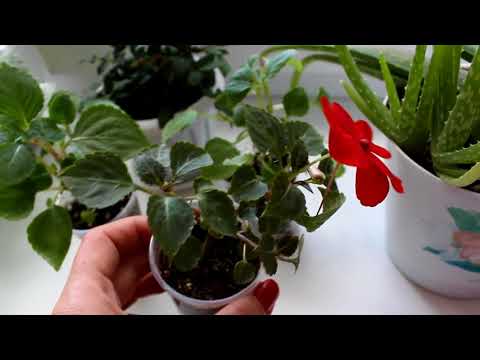

Watch this video on YouTube
Pests and diseases
This plant can attract whiteflies or aphids to itself. Also, if the air is not humidified enough, then a spider mite may appear. If the damage is significant, then insecticide treatment is indispensable. And with an excess of moisture, gray rot is formed.
Possible problems and causes
- The plant sheds the lower leaves - lack of moisture or heat, the presence of pests.
- Wilting leaves - lack of moisture. If, even after watering, they continue to wither, then, most likely, the root system has rotted or there are pests on the plant. Try to root the apical shoot again.
- Poor bloom - little nutrients or light. The plant may have been planted in a very large pot.
- Elongated shoots - little light or very hot.
- Falling flowers - a dry earthen lump or excessively low air humidity.
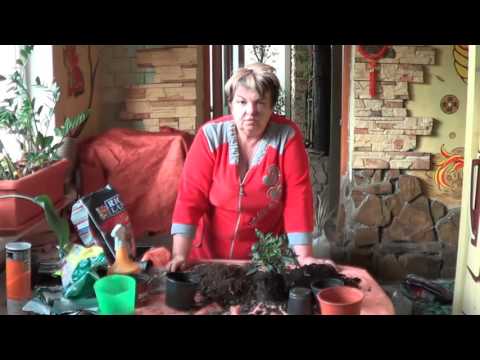

Watch this video on YouTube
Types of balsam with photos and names
Among the many types of balsam, the following are especially distinguished by their decorativeness:
Balsam Hawker (Impatiens Hawkeri)
It was thanks to him that the New Guinea balsam hybrids (Impatiens New Guinea) were born. They have flowers of a fairly large size, and the leaves have an elongated shape. Flowering continues all year round. These hybrids are excellent in direct sunlight.
Balsam Waller or Waller (Impatiens walleriana)
This species is the ancestor of a large number of hybrids. Its leaves have a brownish-reddish color, and the stems are very juicy. He has a lot of flowers and often they completely cover the leaves.
Balsam of Niamean (Impatiens niamniamensis)
This species has very interesting flowers that resemble beans in shape. They are yellow or red in color. And there is also a species whose flowers are painted in both of these colors at once.


Watch this video on YouTube

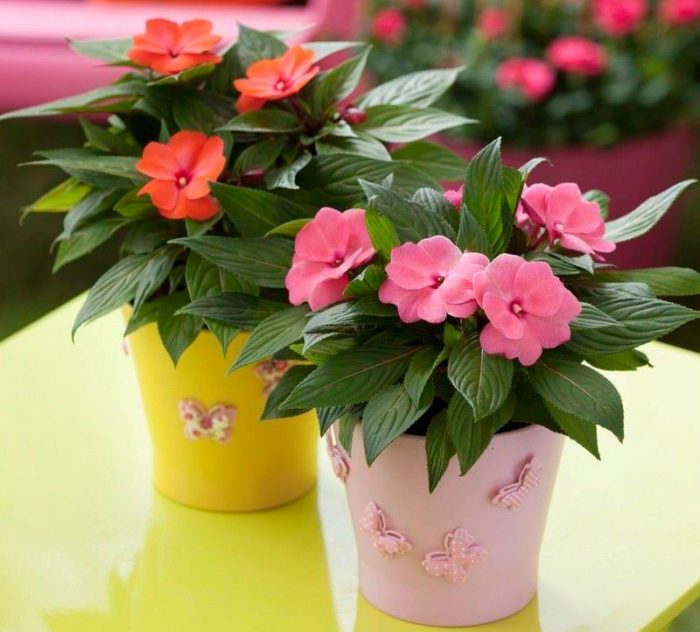
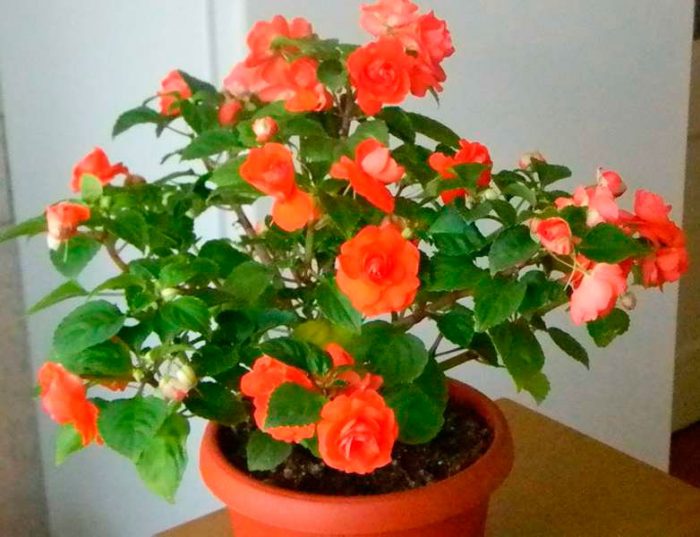
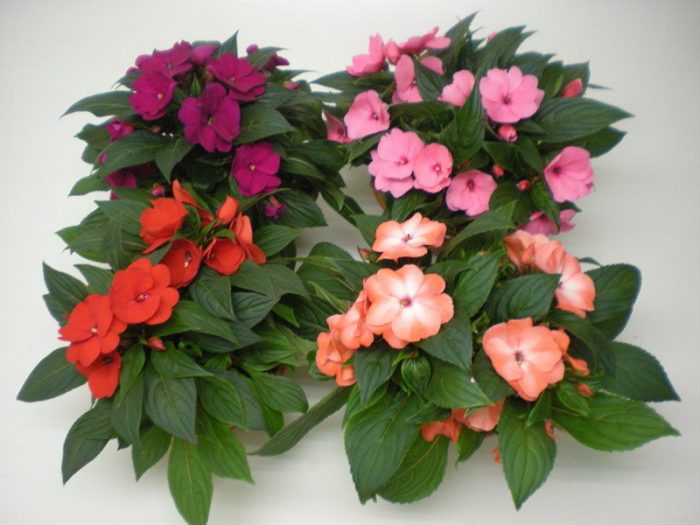
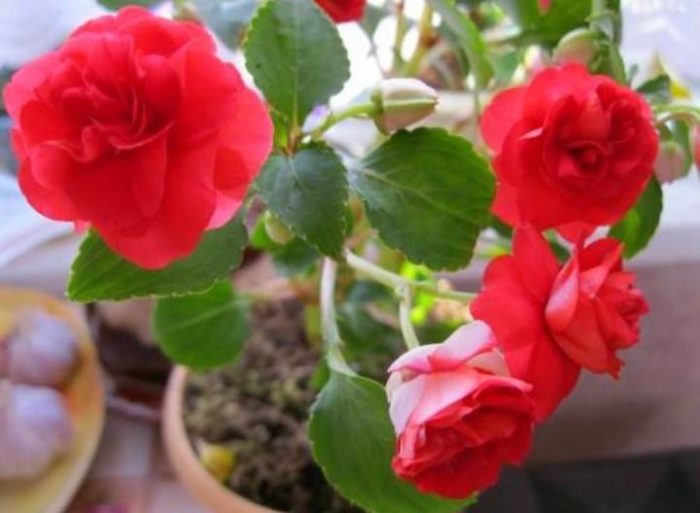
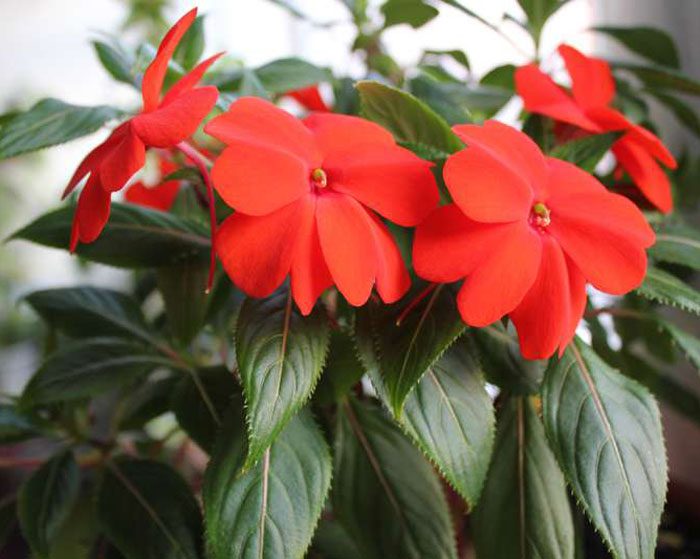
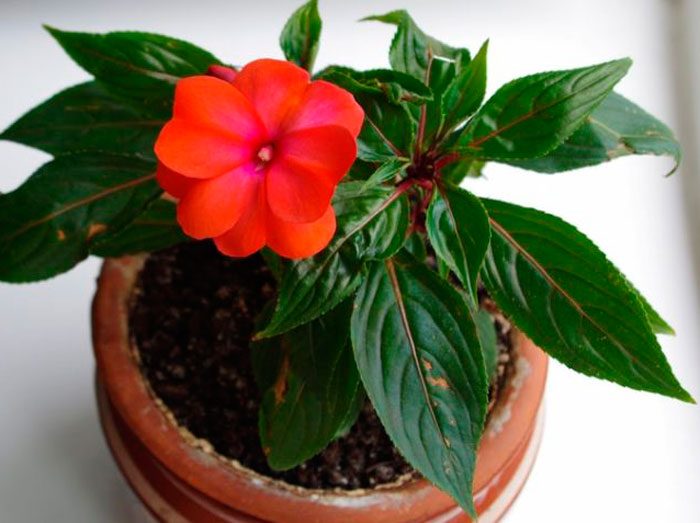
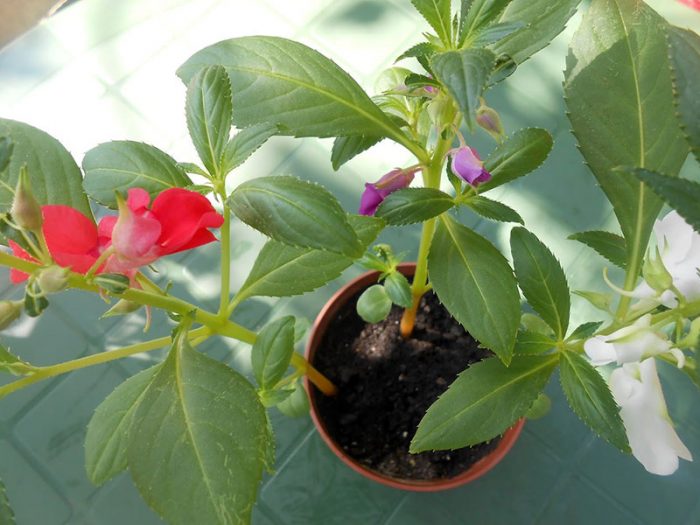
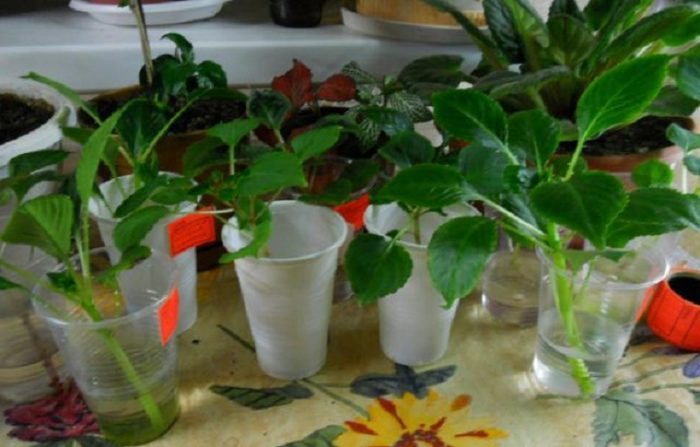
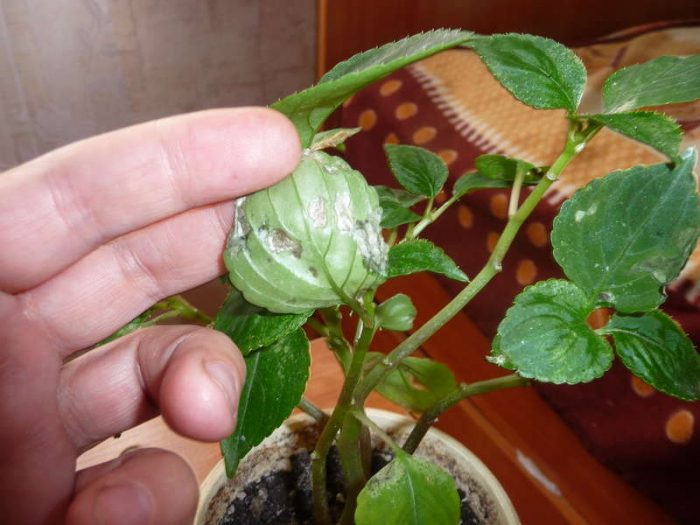
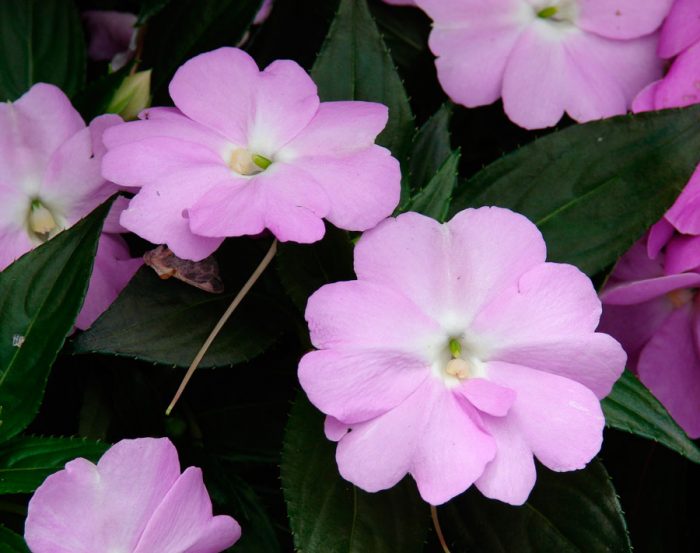
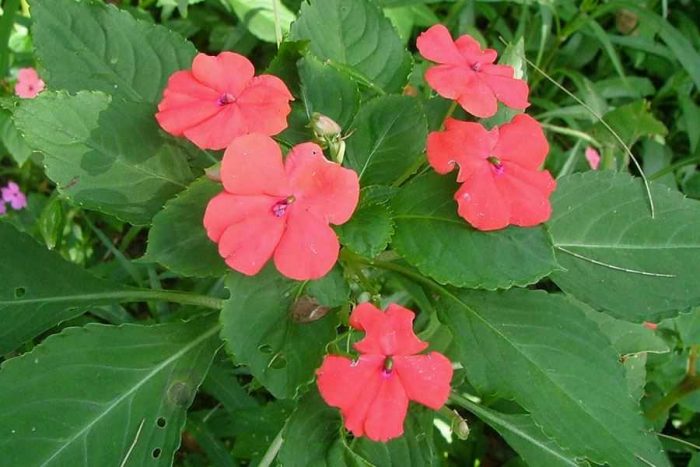
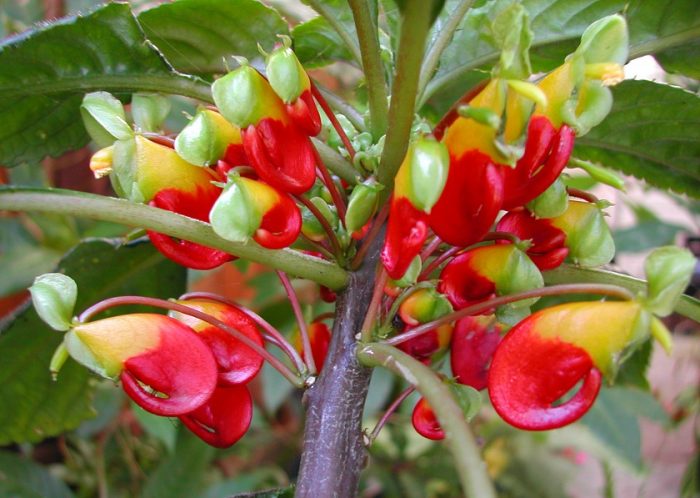
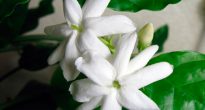





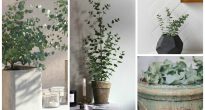



Good day. We were given a couple of balsams. At first everything was fine, but then for some reason they began to mow in some direction. Why is this okay?
It is necessary to twist the flower clockwise after watering so that it is even